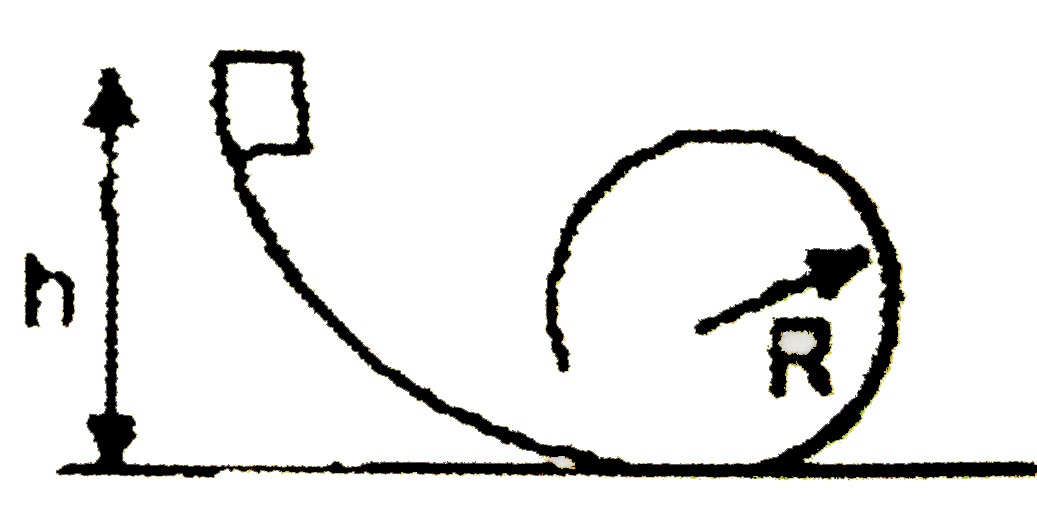in the fig 4E.25 (a) shown the wedge of mass M has a semiciular groove. A particle of mass m=m2 is realeased from A ,it sliders on the smooth cirular track and starts climbing cirular track and starts climbing on the right face.
(i) find the maximum value of 0 which it can subtend with vertical and also find the distance displaced by wedge at this position.
(ii) find the maximum velcoity of wedge during process of motion.

Step by step video & image solution for in the fig 4E.25 (a) shown the wedge of mass M has a semiciular groove. A particle of mass m=m/2 is realeased from A ,it sliders on the smooth cirular track and starts climbing cirular track and starts climbing on the right face. (i) find the maximum value of 0 which it can subtend with vertical and also find the distance displaced by wedge at this position. (ii) find the maximum velcoity of wedge during process of motion. by Physics experts to help you in doubts & scoring excellent marks in Class 11 exams.
Updated on:21/07/2023Topper's Solved these Questions
- IMPULSE AND MOMENTUMBook:ANURAG MISHRAChapter:IMPULSE AND MOMENTUMExercise:Level 1
Explore 110 Videos
- IMPULSE AND MOMENTUMBook:ANURAG MISHRAChapter:IMPULSE AND MOMENTUMExercise:L-2
Explore 21 Videos
- IMPULSE AND MOMENTUMBook:ANURAG MISHRAChapter:IMPULSE AND MOMENTUMExercise:matching
Explore 3 Videos
- FORCE ANALYSISBook:ANURAG MISHRAChapter:FORCE ANALYSISExercise:Matching type
Explore 13 Videos
- RIGID BODY MOTIONBook:ANURAG MISHRAChapter:RIGID BODY MOTIONExercise:MATCH THE COLUMN
Explore 12 Videos
Similar Questions
In the figure shown the wedge of mass M has a semicircular groove. A particle of mass m=M2 is released frem A. It slides on the smooth circular track and starts climbing on the right face. Find the maximum velocity of wedge during process of motion.

View SolutionA body of mass 10kg is at height of 10m at point A as shown on a smooth track. Find speed at B.

View Solution
Knowledge Check
The mass m slides down the track and completes the vertical circle on the smooth curved surface. The minimum value of h will be:
 ARB2 RC2.5 RD3 R
ARB2 RC2.5 RD3 RA ball of mass m is released from A inside a smooth wedge of mass m as shown in figure. What is the speed of the wedge when the ball reaches point B?
 A(a) (gR3√2)1/2B(b) √2gRC(c) (5gR2√3)1/2D(d) √32gR
A(a) (gR3√2)1/2B(b) √2gRC(c) (5gR2√3)1/2D(d) √32gRA wedge of mass M = 4m lies on a frictionless plane. A particle of mass m approaches the wedge with speed v. There is no friction between the particle and the plane or between the particle and the wedge. The maximum height climbed by the particle on the wedge is given by:
A2v25gBv2gC2v27gDv22g
A block of mass m is released from a height h from the top of a smooth surface. There is an ideal spring of spring constant k at the bottom of the track. Find the maximum compression in the spring (Wedge is fixed)

View SolutionA block of mass m slides down a smooth vertical circular track. During the motion, the block is in:
View SolutionA block of mass m slides down a smooth vertical circular track. During the motion, the block is in
View SolutionThere is a smooth tunnel upto centre C of a solid sphere of mass 'M' and radius R.A particle of mass m(<<M) is realeased from point P along the line CP. Find velocity of 'm' while striking at C.
 .
.
View SolutionA wedge of mass M = 4m lies on a frictionless plane. A particle of mass m approaches the wedge with speed v. There is no friction between the particle and the plane or between the particle and the wedge. The maximum height climbed by the particle on the wedge is given by:
View Solution

